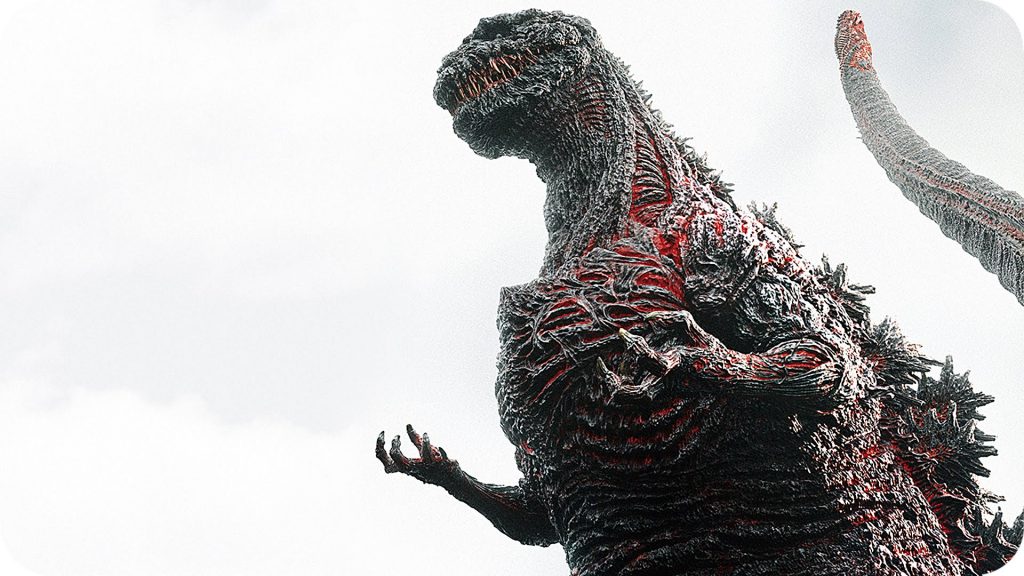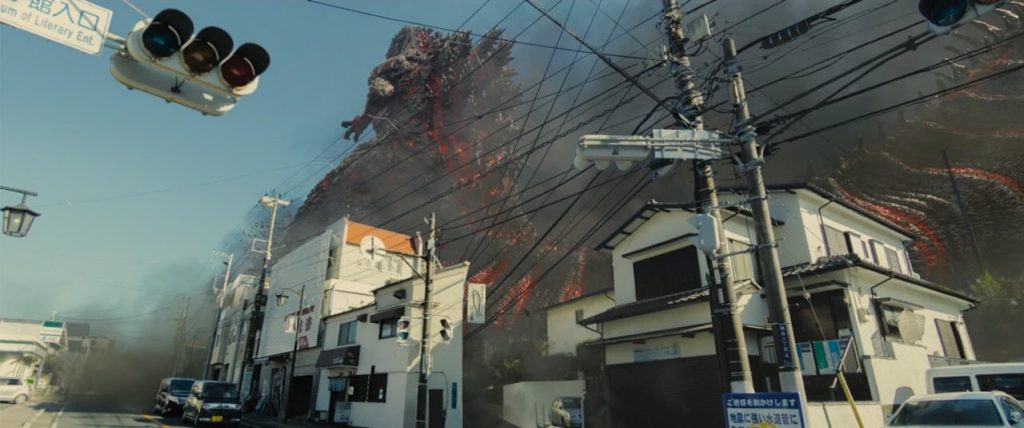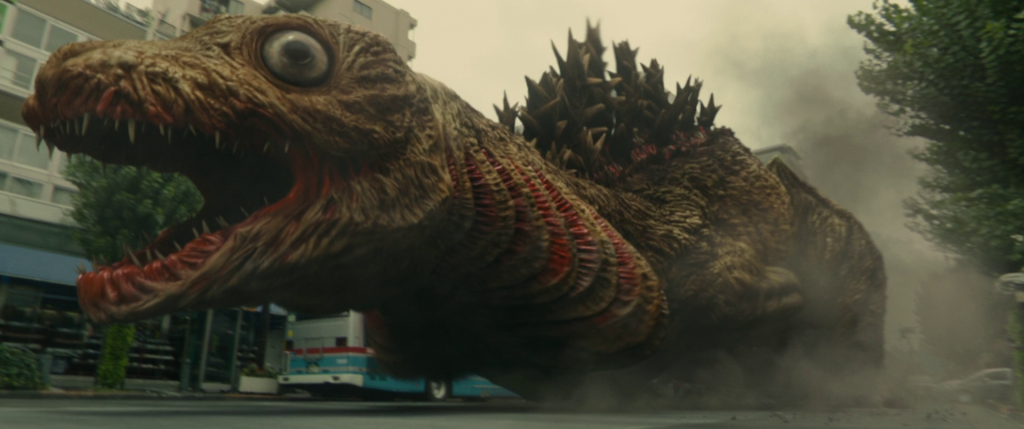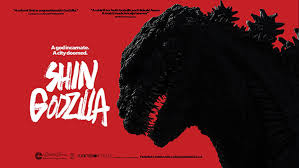Shin Godzilla (2016): A New Nuclear Threat.
If there was ever a film that captured the anxiety of the modern world as it is right now it’s Shin Godzilla directed by Hideaki Anno & Shinji Higuchi. It’s a film which seemed to have been made specifically to be released this week when, in fact, it was probably inspired by the Fukushima Daiichi nuclear disaster on 11th March 2011.

Firstly, and most poignantly, this week saw the death of Haruo Nakajima, the man who played the first Godzilla in Ishirō Honda’s classic 1954 film. Secondly, this week has also seen the world facing the menace of nuclear war for the first time in decades. The threat that North Korea have made on the American territory of Guam is also a threat to the Japanese nation as any missiles fired on Guam would have to fly over the Japanese islands to get to their targets.
The focus of Shin Godzilla, or Godzilla: Resurgence as it is also known, is also prescient as its focus is less on the monster itself and more on the inadequacies and frailties of officialdom. A lot of the film’s humour stems from these inadequacies with layer upon layer of bureaucracy coming in the way of making even the smallest decisions. This might not sound like the basis of the most entertaining film but, judging from the audience I saw the film with, it was much appreciated. Officials are satirised for not fully appreciating their roles and in one scene, which possibly had the biggest laugh of the night, the new Prime Minister, faced with a massive crisis that is ruining his country, complains that his noodles were cold – “I knew this job was going to be hard” he says.

When the original Godzilla was released in 1954 it was a time of fear. The only time nuclear bombs have ever been used as an act of aggression had occurred only nine years before and Japan was still trying to pick up the pieces. The attacks on Hiroshima and Nagasaki had not only been on the cities themselves but also on the very psyche of this proud nation. It made them re-evaluate their past and their future and the monster of that film was a representation of the national fear of the destruction caused by nuclear war. It was a similar process that American Sci-fi was exploring in films like Tarantula, Them! or The Day The Earth Stood Still. The destruction of Japan by this gigantic creature reflected the devastation the two bombs (whimsically named Fat Man and Little Boy) had on their two targets.
The scars of these attacks are still felt by Japan, a country which has a love/hate relationship with nuclear power. When this new film was conceived the threat to the country was from the very real possibility of another nuclear power plant disaster but the fear of another bomb is present throughout. As Kayoko Ann Patterson (Satomi Ishihara) says at one point, “I won’t see a third bomb dropped on the country of my grandmother, who lived through it.”

All this talk of bureaucratic infighting and humour doesn’t sound like a Godzilla film but it is the glue that holds the film together. What we want to see when we go to a Godzilla movie, however, is the monster and it is here that Shin Godzilla really delivers. The destruction is massively impressive and there is a real sense of panic on the streets of Tokyo and the other cities that are threatened. The creature is massive and does what you would expect in a kaiju movie but this is not a Hollywood monster. Godzilla is definitely rooted within the Japanese tradition. It is, in its earliest incarnation, very humorous in design (especially its eyes) and later it possesses abilities that the logic of an American movie may not allow. And this is completely fine and impressively done despite the obvious budget restrictions.
It’s easy to compare Shin Godzilla with Gareth Edwards’ 2014 film but comparisons are probably unfair. Apart from differences in budgets there are also differences in intent. Edwards’ Godzilla was both a threat and a saviour – the ying to the MUTO’s (Massive Unidentified Terrestrial Organism) yang. When the US was threatened by this mutant creature, Godzilla was nature’s way of readdressing the balance but in this new version, Godzilla is the threat. It is all our anxieties and fears in visual form.

Shin Godzilla is not a perfect film. It is difficult to believe, for example, that Kayoko Ann Patterson could ever make a run for the American presidency when she clearly isn’t a fluent English speaker but it’s still an excellent addition to the Godzilla canon. It has the destruction we require, the right amount humour that any film like this needs and plenty of heart, summed up wonderfully in the final moments with Hiromi Ogashira’s smile.

